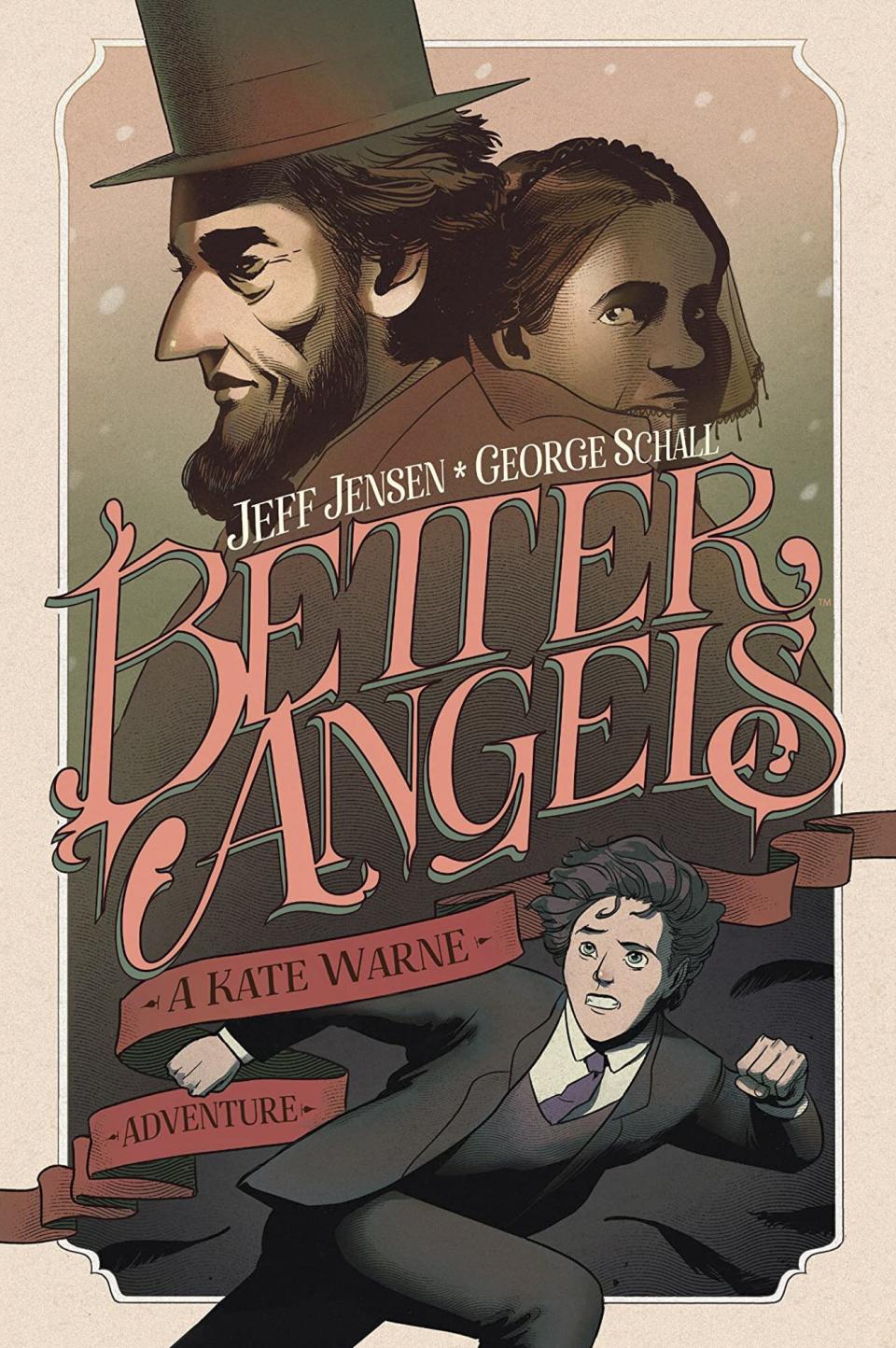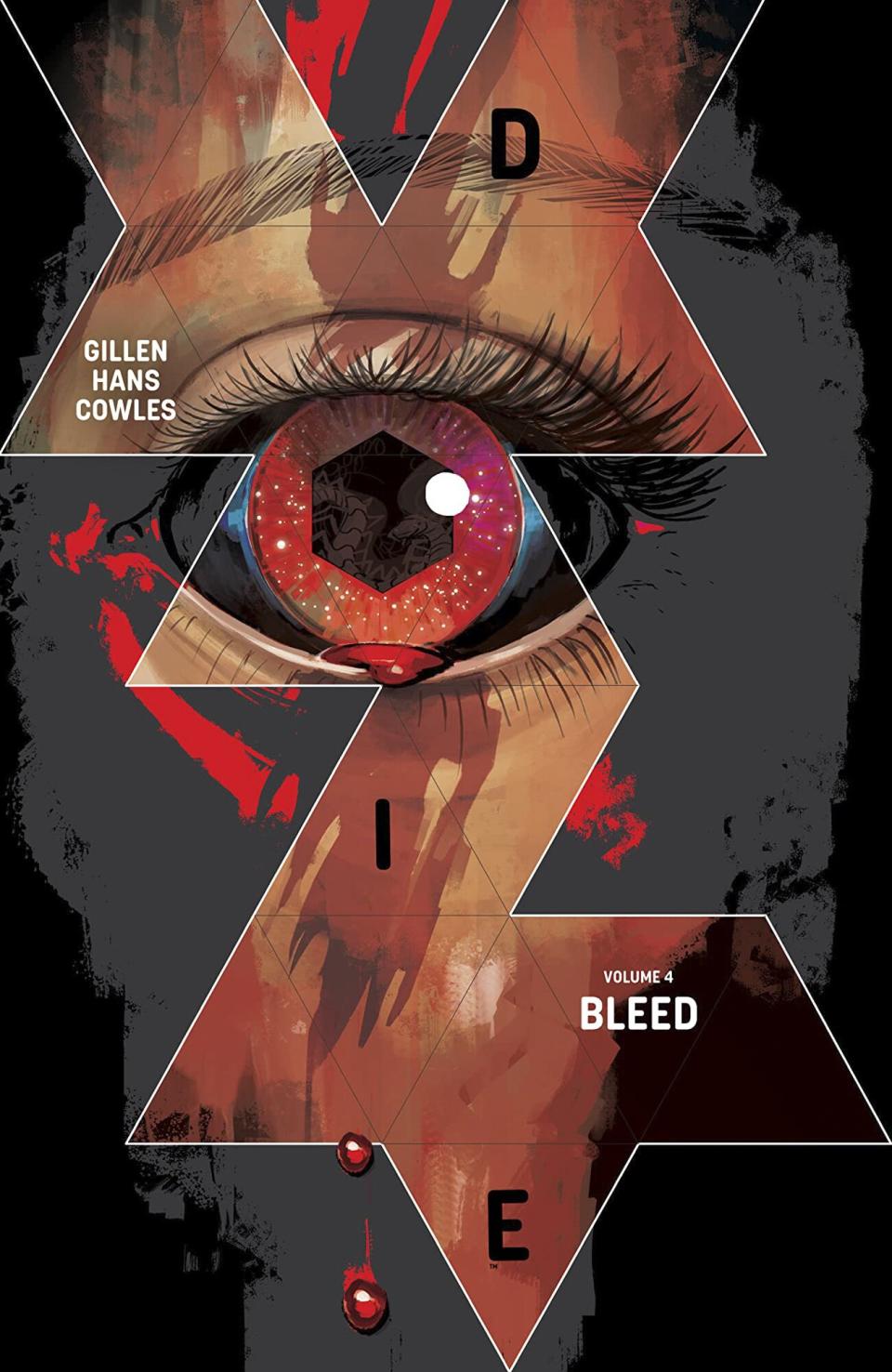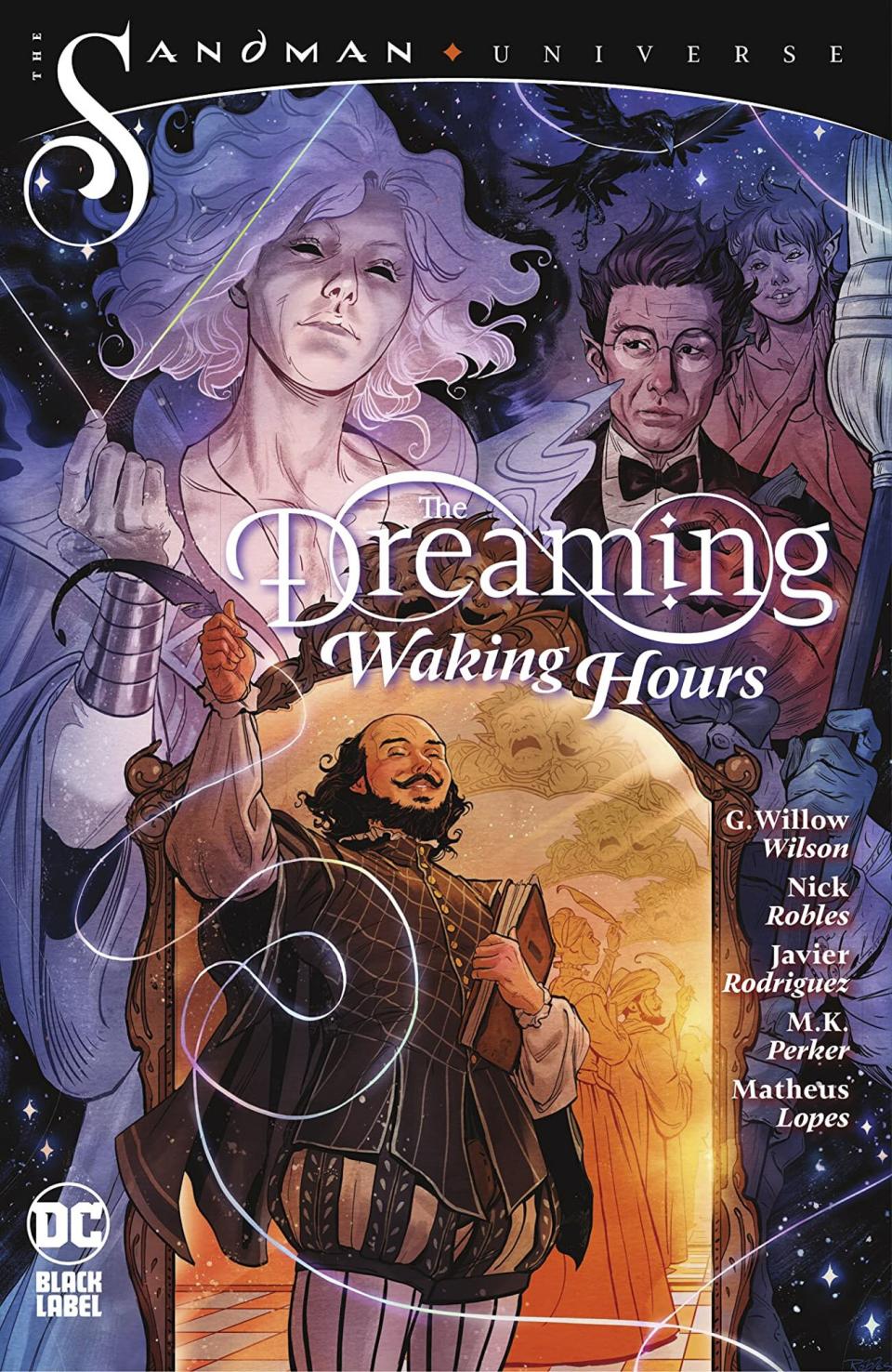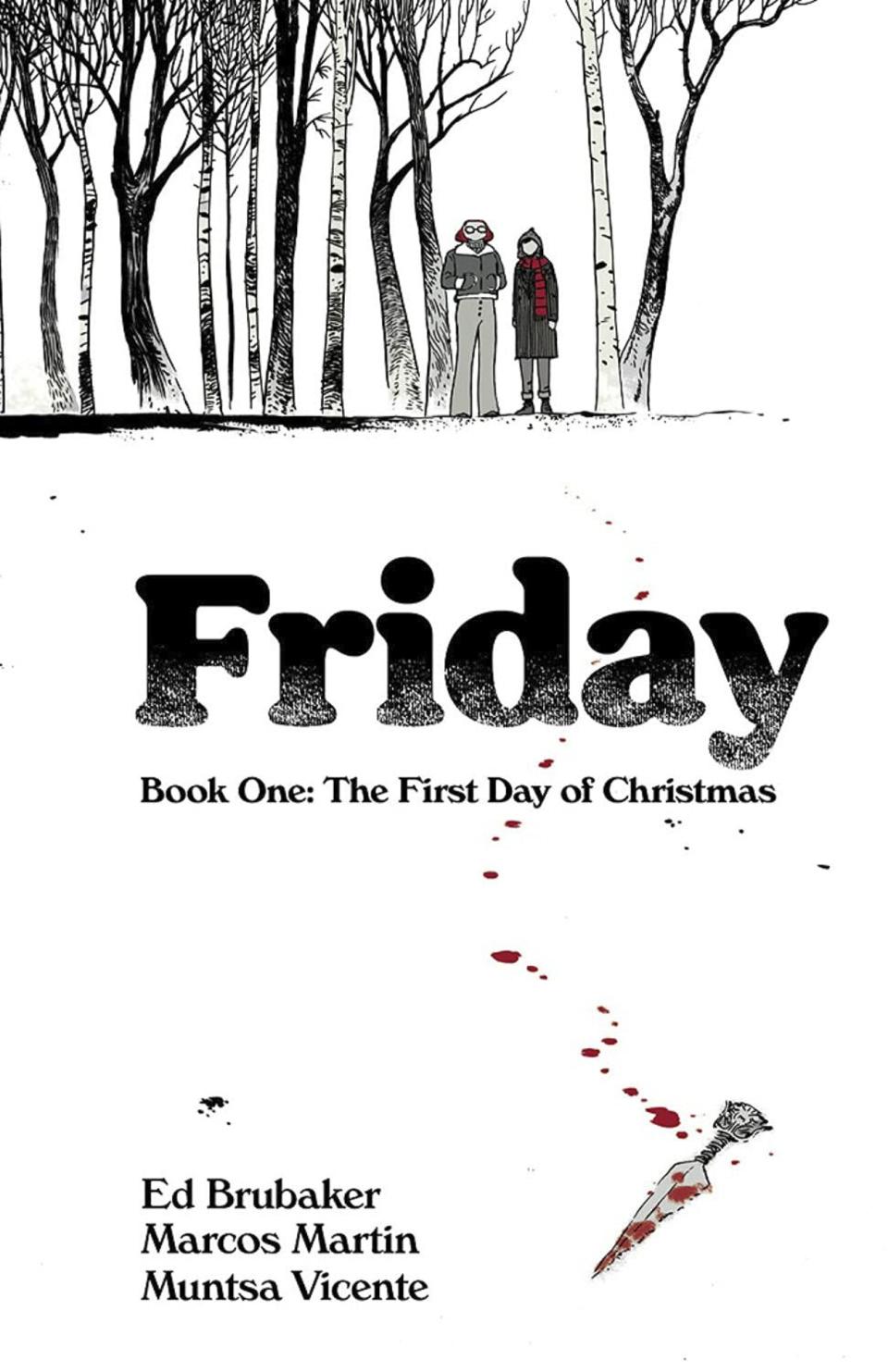The best comics from November: Fresh looks at forgotten history and old fantasies
- Oops!Something went wrong.Please try again later.
We are rapidly approaching the end of the year, but before we get to the best comics of all of 2021, let's shine a light on the coolest books that hit shelves in November alone!
Best new books

BOOM! Studios 'Better Angels,' by Jeff Jensen and George Schall
Better Angels: A Kate Warne Adventure (Archaia)
Jeff Jensen (writer), George Schall (artist)
History is an underappreciated comic book genre. So often dominated by superheroes and sci-fi, graphic novels are low-key a fantastic format for telling under-recognized tales from the past. That's what former EW writer Jeff Jensen does with Better Angels, an examination of the first female Pinkerton detective.
Jensen is certainly well-versed in traditional comic genres — having both written an oral history of Watchmen for EW and scripted an episode of HBO's Watchmen show that paid masterful homage to the concepts of Alan Moore and Dave Gibbons' original — so it's interesting that his own comics work has gone in more idiosyncratic directions. His first graphic novel, Green River Killer, was a dramatization of his own father's work as a detective catching the titular Seattle-based serial killer in the late 20th century.
Better Angels is set more than a century earlier, at the dawn of the Civil War. Its protagonist, Kate Warne, is working hard to prove that she's just as good a detective as the men who look down their noses at her. But her unlikely position makes her the perfect choice to protect newly elected President Abraham Lincoln from a Confederate plot. Along the way, Jensen and artist George Schall examine the forces that drove Kate to become a kickass detective in a time and place that was very hostile to working women. They also excavate forgotten political elements of Lincoln's time, like the Wide-Awakes who marched by lamplight through hostile streets proclaiming the righteousness of Lincoln's anti-slavery politics. To its credit, Better Angels also manages to redeem Mary Todd Lincoln from her too-common caricature as a grieving madwoman.

DC Comics 'Wonder Woman Historia: Part 1,' by Kelly Sue DeConnick and Phil Jimenez
Wonder Woman Historia: Part One (DC Black Label)
Kelly Sue DeConnick (writer), Phil Jimenez (artist)
Sometimes a comic just blows you away. This new Wonder Woman story (the first in a planned trilogy) contains awe-inspiring work from both writer Kelly Sue DeConnick and artist Phil Jimenez. Interestingly, this comic barely involves the superhero Wonder Woman. True to its title, this is the history of Wonder Woman — specifically, how certain powerful figures in the DC universe came to decide that a female superhero was necessary for their world.
DeConnick takes full advantage of DC's Black Label imprint for mature readers by delving into the history of violent misogyny and patriarchal subjugation that made the Greek goddesses want to create tribes of powerful women capable of fighting back against oppression. Jimenez depicts that history on classic Greek urns and vases, all suspended in space to display the horrible breadth of sexist oppression. That's just one of the many arresting images he deploys throughout.
Jimenez also goes all-out giving the Greek goddesses a new kind of cosmic majesty: Hestia is a molten lava woman, Aphrodite is a full-figured Black goddess of love, and Athena is a mysterious warrior hidden behind haunting masks. Together, DeConnick and Jimenez even pull off the seemingly impossible accomplishment of making Hera cool. Often depicted as a jealous harpy in traditional Greek myths (or a loving mother in Disney's Hercules), here Hera is an all-seeing peacock goddess with power to rival Zeus.
Even if you've been reading Jimenez comics for decades, dating back to his memorable work on Infinite Crisis and New X-Men, you still might be freshly astonished at every page-turn in Wonder Woman Historia. The level of detail and the originality of the designs makes this a book you'll want to pore over again and again — especially after the final pages reveal the various Amazon tribes, each modeled after one of their founding goddesses. Do you identify more with Artemis' feral hunters, or Demeter's warriors adorned in the sacred snakes of the harvest goddess? Though Athena or Aphrodite are often depicted as the Amazons' primary divine patron, DeConnick makes a strong case for Demeter: "For it is Demeter who ensures man reaps what he sows."
The combination of this kind of eye-popping art, intriguing character design, and meaningful resonances makes Wonder Woman Historia a comic no one should miss.
Best collections

Image Comics Volume 4 of 'Die,' by Kieron Gillen and Stephanie Hans
Die volume 4: Bleed (Image)
Kieron Gillen (writer), Stephanie Hans (artist)
It's always nice to see a creative team stick the landing. When Die first launched in late 2018, it had a compelling and easy-to-understand premise: Jumanji, but with Dungeons & Dragons! This dark, rich epic is the story of a group of old friends reuniting decades after they'd escaped a fantasy game world, and going back in to save the one who didn't make it out.
Over the following 19 issues, Gillen and Hans expanded the premise to explore the different locations contained within this fantasy world (such as Little England, which fuses J.R.R. Tolkien's Shire with C.S. Lewis' Narnia and the creations of other beloved British writers). They didn't just pay homage their influences, either; in many cases Die brought those actual influences into the story as personages the main characters could talk to and interact with. By the end, the group have not only had face-to-face interactions with the likes of Charlotte Brontë, H.G. Wells, and H.P. Lovecraft (you really can never get enough Lovecraft these days), in some cases they've also physically destroyed these authors. Never meet your heroes!
Die goes even further in its final issues, pitting the characters against the literal embodiment of the role-playing games that have (figuratively and literally) dominated their lives. Anyone who loves games has surely wondered at some point if a game was taking up too much of their time and energy. When it comes to role-playing games in particular… well, if you were to come face-to-face with your own 18-year-old self's fantasy, what shadows might you find lurking in the deep? The conceit doubles for Gillen and Hans reckoning with their own story and deciding what to do with it.
The conclusion is fulfilling and satisfactory, so it feels like we can now confirm Die as a very good comic, one of the best mainstream offerings in years. Hans' painterly art makes Die look uniquely distinguished from every other fantasy series on the shelf, and proves more than capable of tackling the many, many different kinds of stories Gillen brings into their orbit. Gillen himself has never been better at telling an epic story about confronting your beloved fantasies and working hard to be better than them.
Anyone who found themselves intrigued by Die's initial premise owes it to themselves to read all four volumes. They won't be disappointed.

DC Comics 'The Dreaming: Waking Hours,' by G. Willow Wilson, Nick Robles, Javier Rodriguez, & co.
The Dreaming: Waking Hours (DC Black Label)
G Willow Wilson (writer), Nick Robles (artist), Javier Rodriguez (artist/colorist), M.K. Perker (artist), Matheus Lopes (colorist)
Between the Audible audio adaptation and the upcoming Netflix series, The Sandman is getting revisited a lot these days. That makes sense, since the dark fantasy comic created by Neil Gaiman, Sam Kieth, and Mike Dringenberg remains widely beloved and influential. But on top of reflecting on the past, stories this rich should also be propelled forward into the future.
That was the premise of The Sandman Universe, a DC Comics line launched in 2018 that picked up characters and concepts from Gaiman's original stories but also invented whole new ones. The flagship comic from that line was The Dreaming, by Si Spurrier and Bilquis Evely, which followed Sandman supporting characters like Lucien the librarian and Cain and Abel dealing with their boss the Dream King disappearing again (plus ca change, eh?). After Spurrier and Evely brought their run home with an eye-popping finale last year, writer G. Willow Wilson and artist Nick Robles took over.
Wilson, Robles, and their other collaborators proceeded to tackle Sandman characters who hadn't been reused yet — namely William Shakespeare and the fairies from A Midsummer Night's Dream — and also concocted a whole group of colorful new characters: the renegade nightmare Ruin, the exiled angel Jophiel, and the human sorceress (descendant of Roderick Burgess, who Sandman readers will recognize as the villain who once captured Dream way back at the very beginning of the story). By the time you reach the end of this volume, which collects all 12 issues of the series, you'll wish you could just keep reading stories about Ruin and his friends. But alas, this seems like the last installment of the Sandman Universe for the foreseeable future.
Given how much Wilson uses Sandman concepts to wrestle with the same kind of writerly questions that Gaiman once did (what if every candidate theorized as the "real" author of Shakespeare's plays could interact? What if revolution and civil war came to the ancient land of Faerie?) and how much Robles and Rodriguez create art in keeping with the legendary dreamscape, The Dreaming: The Waking Hours stands as a worthy inheritor of Morpheus' legacy.

Image Comics The first volume of 'Friday,' by Ed Brubaker and Marcos Martin
Friday Book One: The First Day of Christmas (Image)
Ed Brubaker (writer), Marcos Martin (artist), Munsa Vicente (colorist)
It's one subversion after another in Friday. This comic started as digital-only last year during the darkest months of the pandemic, when readers and professionals alike were struggling with the stoppage in production of physical comics. If you missed it then, be sure to check out the new print collection, because what starts as a riff on "kid detective" stories like Encyclopedia Brown quickly becomes something else.
For one thing, Friday has some brilliantly-named protagonists: Its titular character is Friday Fitzhugh, a smart girl who spent her high school years palling around with a genius mystery-solver named Lancelot Jones. The story begins with Friday returning home to Kings Hill after her first semester at college, and she's worried about unresolved tensions between her and Lance. At first you figure that one of them must have made an unwanted move or professed unrequited love…but it turns out to be even more tangled than that. It seems like the book is setting itself up to be a Watchmen-style subversion of kids adventure stories from an older, more jaded perspective…but then you can't help but notice that all of Friday and Lance's previous cases sound consistently supernatural. Once you start to realize that this seemingly quaint New England town might owe as much to H.P. Lovecraft (there he is again) as Donald J. Sobol, then Brubaker and Martin hit you with a truly unexpected cliffhanger.
You won't find many answers in the first volume of Friday, but you will encounter some thrilling mysteries — and an appreciation for the innovations comic creators came up with to address the pandemic.
Related content:

